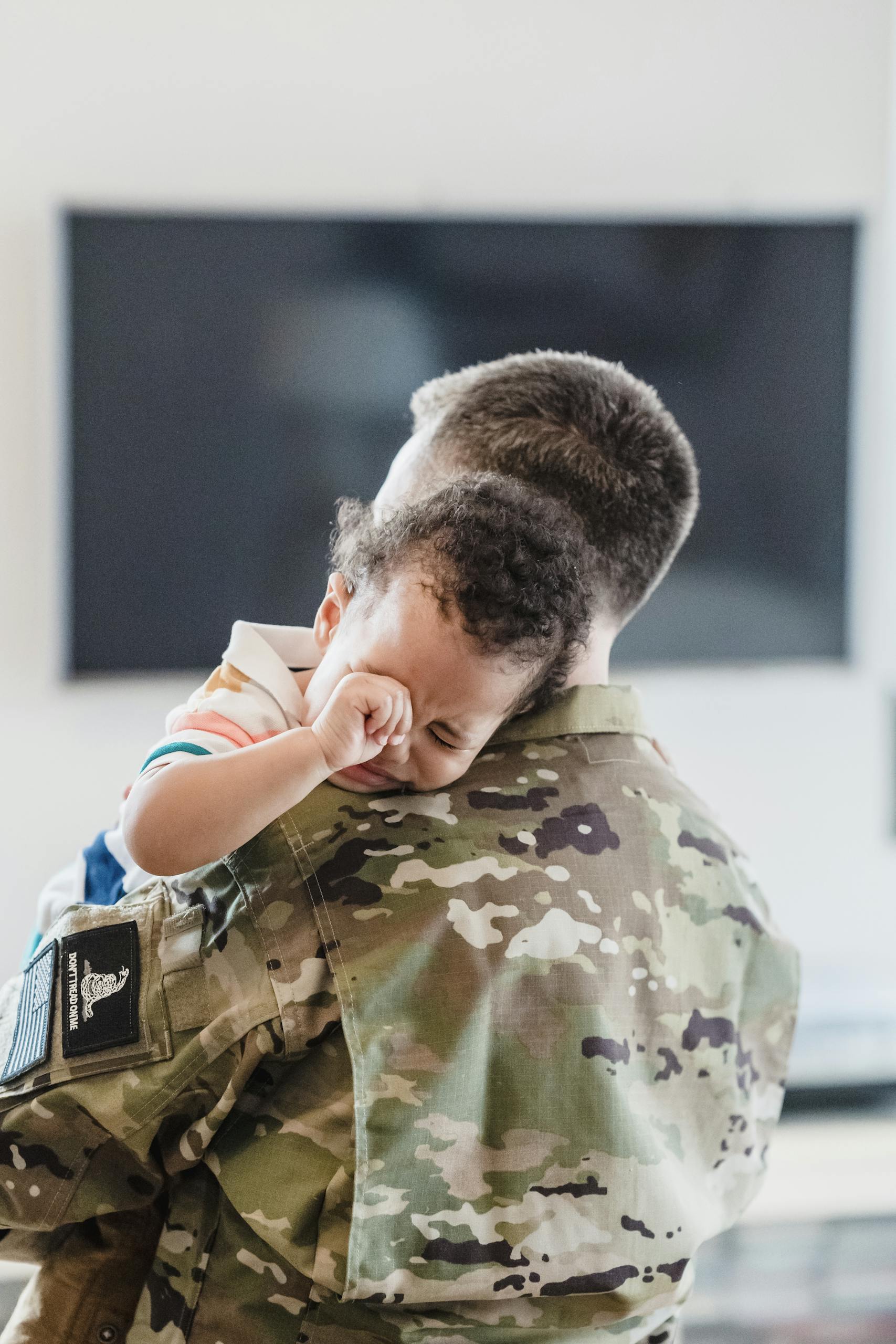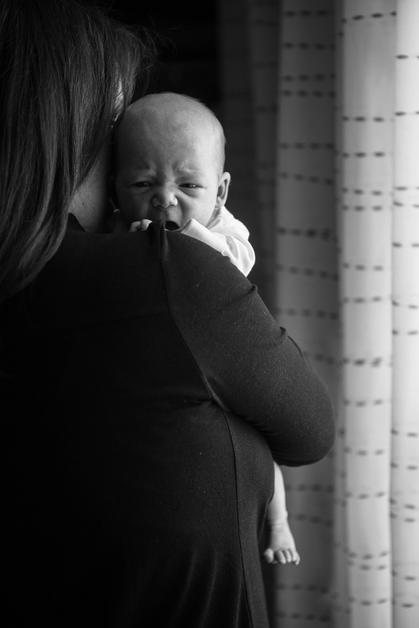Separation anxiety. The phrase alone carries emotional weight, doesn’t it? For parents, the sight of a child clinging desperately as you reach for the door, or the sound of wailing that lingers in your mind long after you’ve left, can spark a whirlwind of feelings—tenderness, guilt, frustration, and sometimes even self-doubt. Why does my baby become so distressed when I leave the room? Is this just a fleeting phase or a sign of something deeper? The good news: what you’re witnessing often reflects normal growth. Yet, the echoes of “Is this normal?” seldom quieten on their own. Understanding how separation anxiety unfolds, what underpins its appearance, and how to respond with calm, science-driven strategies can bring reassurance—not just to your child, but to your own parent heart as well. We’ll unpack the science of child attachment, untangle persistent myths, and spotlight ways to nurture resilience through uncertainty.
What Exactly Is Separation Anxiety?
Separation anxiety, described as excessive distress over the prospect or reality of being apart from a primary caregiver, emerges most prominently during infancy and toddlerhood—but parents are often surprised to hear it can resurface throughout childhood, adolescence, and even adulthood. The term itself sits at the crossroads of psychological development and family life, signaling a perfectly natural milestone when moderate, and a potential concern when intense or unyielding. Neurodevelopmentally, it tends to peak between six and eight months, a period marked by the blossoming of object permanence—the dawning knowledge that loved ones continue to exist, even if hidden from view.
Psychologically, separation anxiety reflects the burgeoning attachment between child and caregiver—the product of months of reciprocal smiles, soothing hugs, and shared routines. As this relationship becomes an anchor, disruptions—no matter how brief—may provoke fear, clinginess, or sorrow. It’s as though the child’s internal alarm system has been activated, convinced that out of sight means out of reach anew, each time.
Why Babies Experience Separation Anxiety: Biological and Environmental Triggers
You might wonder why separation anxiety strikes with such force in some children and only glances off others. The answer? An interplay of brain chemistry, developmental stage, temperament, and family environment. Infants with naturally sensitive dispositions or heightened reactivity, those described in research as possessing a “reactive autonomic system,” tend to experience transitions more tumultuously.
On a neurobiological level, the infant’s amygdala—a tiny almond-shaped region in the brain—lights up in response to perceived threats, driving the production of stress hormones like cortisol. When a parent departs, the lack of cognitive maturity to grasp the concept of a return fuels the sense of abandonment. Routine changes, new childcare settings, or family disruptions can all amplify this natural distress, temporarily tipping the scale from manageable worry to overwhelming fear.
Recognizing Manifestations: How Separation Anxiety Presents Itself
Separation anxiety does not always wear the same mask. Sometimes, it’s overt—loud, persistent crying as soon as you set your infant down. At other times, subtler signals appear: nightmares (sometimes called “separation-themed dreams”), difficulty with sleep onset, reduced appetite, or a sudden refusal to be comforted by anyone else. For toddlers and preschoolers, anticipatory worries (“Will Mommy leave me at daycare today?”) can lead to physical symptoms—headaches, stomachaches, even racing heartbeats—mirroring the real, measurable physiological distress beneath the surface. In older children or adolescents, the anxiety might shift shape, resulting in school avoidance, repeated calls or texts, or ongoing preoccupation with family safety.
Interestingly, even pets—dogs in particular—demonstrate behaviors like destructive chewing or howling when separated from their owners, sharing the core features of distress and attachment-driven protest.
Groups Affected and Types: A Span Across the Lifespan
Most children between six months and three years will traverse some version of separation anxiety as part of normal development—typically brief, often resolved by the consistent return of the caregiver. When the reaction intensifies, spills over into daily disruptions, or lingers beyond four weeks in children (six months for adults), clinicians consider the diagnosis of separation anxiety disorder. In teens, this could look like persistent fears of family harm, frequent somatic complaints, or avoidance of independent activities.
Adults, too, can grapple with the echoes of childhood attachment patterns. A parent who dreads being apart from their own children, experiences nightmares about loss, or finds it intolerable to sleep alone may be experiencing adult separation anxiety. While less often discussed, the emotional impact can be profound, sometimes stemming from unresolved childhood fears or triggered by large life changes.
Signs and Symptoms: Emotional, Behavioral, and Physical Clues
Spotting separation anxiety involves tuning in to a medley of signals:
- Emotional: Intense fear or sadness, preoccupation with the thought that harm might befall loved ones, bouts of panic at the mere suggestion of separation.
- Behavioral: Clinginess (refusing to let go at drop-off), avoidance (stalling before transitions), refusal to sleep alone, frequent reassurances (“When will you be back?”).
- Physical: Somatic symptoms—headaches, stomachaches, nausea—usually surfacing before separations or at bedtime.
For clinicians, duration and functional interference serve as the diagnostic benchmarks—symptoms persisting for significant stretches and interfering with daily life signal something beyond the routine stumbles of development.
Causes and Risk Factors: A Scientific Overview
Separation anxiety arises from a complex interplay of genetic, neurobiological, and environmental factors:
- Genetics: A family history of anxiety disorders, including panic disorder or generalized anxiety, increases susceptibility.
- Neurochemistry: Variations in neurotransmitters—especially serotonin and norepinephrine—impact the brain’s ability to regulate fear and stress.
- Temperament: Children with inhibited or shy temperaments are at greater risk, particularly when exposed to unfamiliar or unpredictable environments.
- Attachment patterns: Early disruptions in caregiver bonding, fluctuating routines, or major transitions like divorce or bereavement can act as triggers.
- Parental influences: Parents who model anxious behaviors or struggle with their own anxiety pass on risk through both genetics and observed coping strategies.
- Environmental disruptions: Moves, changes in caregivers, trauma, or significant life transitions may catalyze new or intensified symptoms.
Consistent routines, supportive caregiving, and clear communication about departures help buffer against the escalation of symptoms, reinforcing a child’s inner sense of safety.
Myths and Misconceptions: Setting the Record Straight
Myth: Separation anxiety is just typical clinginess.
Fact: While some hesitance at parting is expected, distress that persists, intensifies, or disrupts daily activities is clinically significant.
Myth: It only matters during childhood.
Fact: Adolescents, adults, and even pets can exhibit separation anxiety, each with unique nuances.
Myth: A child behaves this way to manipulate parents or avoid uncomfortable situations.
Fact: The anxiety is authentic and deeply rooted in the brain’s alarm system—these are reflexive, not calculated, responses.
Myth: Reassuring your child too much feeds their anxiety.
Fact: Consistent, brief reassurance and predictable routines foster security—whereas abrupt or inconsistent responses heighten distress.
Myth: Parental behavior is always to blame.
Fact: While environment matters, genetics and neurodevelopmental factors play significant roles.
Supporting Your Baby Through Separation Anxiety: Practical Strategies
The path through separation anxiety involves patience, empathy, and structured routines. If you’ve ever wondered, “Will this ever end?”—know that, for most, it will.
- Create Calming Rituals: Develop a short, predictable goodbye (a song, a loving phrase, a squeeze of a favorite soft toy). The repetition offers comfort and certainty.
- Stay Calm Yourself: Your emotional state registers acutely; a serene tone and confident posture provide nonverbal cues of safety.
- Prepare in Advance: Gradually introduce new caregivers or settings—start with short visits, extend over time, and remain steady in your return.
- Provide Transitional Objects: A familiar blanket or stuffed animal acts as a “bridge” back to your presence, providing tangible reassurance.
- Encourage Short Separations: Brief, positive departures—followed by reliable returns—build trust and resilience. Over time, the nervous system adapts, and distress lessens.
Treatment Options: Therapy, Medication, and Family Support
When symptoms persist, professional support may be warranted. Cognitive behavioral therapy (CBT) is the most researched and effective intervention for separation anxiety disorder—it focuses on gradually increasing tolerance of separations, challenging catastrophic thoughts, and reinforcing coping skills. For some, especially older children or adults, SSRIs (selective serotonin reuptake inhibitors) may augment the benefits of therapy—always supervised by a healthcare provider.
Family therapy, coordinated support with schools or childcare centers, and regular consultation with pediatricians or child psychiatrists help reinforce progress and tailor strategies to unique family needs.
Prevention and Early Intervention: Building Emotional Security
Intervening early, especially in families with a heightened genetic vulnerability or recent life changes, can head off entrenched patterns. Clinicians emphasize:
- Secure attachment formation: Responsive, predictable caregiving lays the groundwork for emotional regulation.
- Gradual exposure to separation: Thoughtfully expanding a child’s independence—playing in another room, brief separations with trusted family—teaches the brain to manage temporary absences.
- Parental self-care: Address your own stress openly, develop calming rituals as a family, and remain mindful that even small efforts support long-term adjustment.
Preparation, open conversations about transitions, and a willingness to seek guidance are all forms of caring.
Living With Separation Anxiety: Everyday Routines and Community Resources
Life rarely sticks to a script—routines get interrupted, unexpected changes arise. Embedding predictability within the chaos is your strongest ally:
- Build regular patterns around drop-offs, pick-ups, and daily schedules.
- Keep transitions short, but not rushed—a quick hug, a confident “See you after snack,” and a timely return.
- Encourage independence gently—offer choices (which shoes for school?), invite problem-solving, and celebrate small steps forward.
- Collaborate closely with childcare providers, teachers, and therapists—the support system extends well beyond the front door.
- Explore local parent groups, mental health resources, and evidence-based apps for additional insights and reassurance.
Key Takeaways
- Separation anxiety is a universal and thoroughly researched phenomenon, with roots in biological, psychological, and environmental factors.
- Early recognition, clear communication, and consistent routines are your best allies for easing distress and supporting healthy emotional growth.
- Evidence-based therapies—especially CBT—and, in some cases, medication, provide robust pathways to recovery if distress intensifies.
- Myths and misconceptions abound, but scientific knowledge dispels fears and empowers families to respond with empathy and confidence.
- Countless resources exist—mental health professionals, school counselors, parent forums, and specialized tools like the Heloa app—offering tailored guidance, educational content, and free health questionnaires for children.
Each step taken, no matter how small, strengthens both your child’s wellbeing and your own. Separation anxiety, when met with evidence and care, becomes not just a hurdle—but a bridge to security, trust, and lasting emotional resilience.
Questions Parents Ask
Can separation anxiety affect sleep patterns in children?
Absolutely, separation anxiety can have an impact on your child’s sleep. Some children may find bedtime particularly challenging because it means being apart from you, even if just for the night. Manifestations might include difficulty falling asleep, frequent waking during the night, or a reluctance to sleep alone. If you notice your child becoming anxious at bedtime, reassure them with calming routines and gentle presence—these small gestures help to create a sense of security and make the transition to sleep smoother. Rest assured, many families experience this, and with patience and support, most children gradually develop confidence in managing nighttime separations.
Can separation anxiety occur in adults as well?
Yes, separation anxiety is not only limited to children—it can affect adults, too. Some parents may feel overwhelming distress at the idea of being apart from their children or loved ones, sometimes experiencing physical symptoms such as restlessness, tension, or difficulty concentrating when separated. These feelings often stem from strong emotional bonds and previous life experiences, and while they may be unsettling, they are more common than you might expect. If these symptoms persist or interfere with daily life, reaching out to a healthcare professional can be an important step towards understanding and managing these emotions.
What role does temperament play in separation anxiety?
Temperament—the unique way each child reacts to the world—plays a significant part in how separation anxiety unfolds. Children with sensitive or cautious temperaments might become more easily distressed during separations, needing extra support and reassurance. This doesn’t mean anything is “wrong”; it simply reflects their natural responses. By approaching each child’s temperament with empathy and adapting routines or comfort measures to their needs, you help them build resilience and a stronger sense of security over time.

Further reading:









